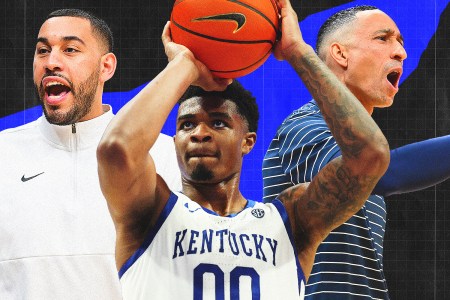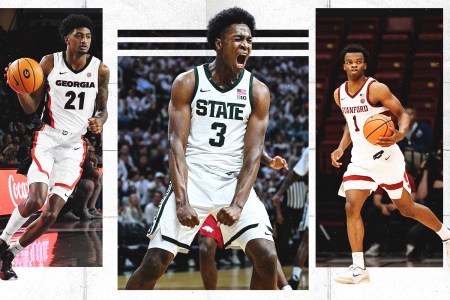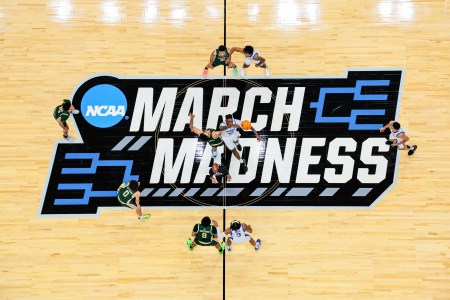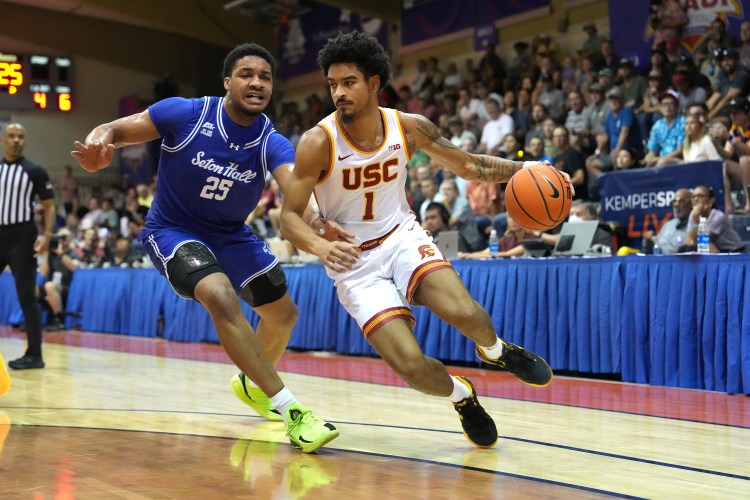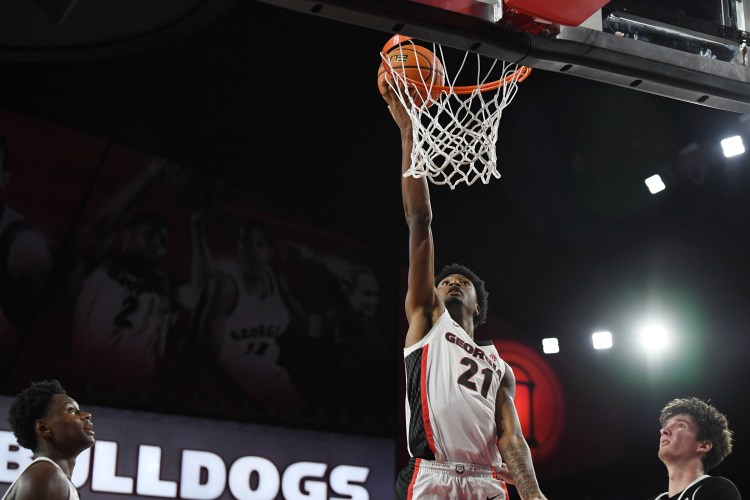PITTSBURGH — When Bernadette McGlade was a Senior Associate Commissioner at the Atlantic Coast Conference from 1997 to 2008, she helped oversee numerous commemorations, including the 25th anniversary of ACC women’s basketball. The festivities included a variety of initiatives, activations and events, including black-tie affairs. So when the Atlantic-10 started planning for ways to mark its 50th year, McGlade, who has been the league’s commissioner since 2008, looked for ways to replicate her ACC experience — with one notable exception. “I thought, you know, we’re not a black-tie league,” she told Hoops HQ.
That’s why instead of staging a fancy shmancy evening affair, the A-10 launched its golden anniversary campaign at a perfectly nice luncheon on Sept. 30 that served as the centerpiece for its media day extravaganza for men’s and women’s basketball. The event was held at PPG Paints Arena in Pittsburgh, which will be the site of the men’s postseason tournament in 2026. That move was also made as part of the golden anniversary campaign, given that the Steel City hosted five of the A-10’s first six championships. Pittsburgh was also the site of the 1976 meetings where the original Eastern Collegiate Basketball League (which became known as the Eastern 8) was conceived, as well as the place where the first league office was established in 1978. The tournament will return to the Barclays Center in 2027 and ’28.
Like everything else in college athletics, the Atlantic-10 has gone through many changes over the last 50 years, and especially over the last couple of decades, during which it tacked through the realignment waves that reshuffled so many conferences. And of course, the league is currently navigating the most dramatic disruption of all, the arrival of revenue sharing and Name, Image and Likeness rules that were implemented by the settlement in the landmark House v. NCAA case.
Traditionally, it has been very hard for the A-10 to keep up with the so-called power conferences. Now that schools will be capped at $20.5 million in spending on revenue sharing, and with Name, Image and Likeness Deals coming under rigid scrutiny by the Collegiate Sports Commission and the consulting firm Deloitte, the balance has been tipped, however slightly, towards conferences like the A-10 and the Big East that don’t have football programs.
“We’re a basketball-centric league. We’ve made no bones about that. We’ve always been that way,” McGlade said. “The fact that we don’t have to be providing NIL money to football student-athletes allows us an opportunity. We still don’t have budgets as large as they have because we don’t have the CFP revenue, but we can provide what would be considered fair market value to men’s and women’s basketball players that could help level out the playing field.”
Congress, Tourney Expansion and the Death of the In-Home Visit: NCAA Leaders on Change
NCAA President Charlie Baker, former Villanova coach Jay Wright and more prominent voices in the sport were in attendance at the Big East’s “Future of College Basketball” Roundtable in New York
Added Loyola Chicago coach Drew Valentine, “If you’re a program that is supported financially at a really highly level and you don’t have football, you can be competitive. The current model is setting us up to be successful.”
All of this works well in theory. But how will it look in practice? That’s what St. Bonaventure coach Mark Schmidt calls “the million-dollar question.” He has many of those, actually. “How much dirty money is going to get involved with this? Are we going back to the old days with the bag? And what is Deloitte and whoever is in charge going to do about it?” Schmidt said. “Because it’s hard for me to believe that they’re going to say no (on NIL deals) to Duke or some of these other big schools.”
The new system has only been in place for a few months, and though McGlade likes what she sees far, she cautioned that the real test will come next spring when the transfer portal heats up anew. “If there’s a lot of circumvention with third-party NIL so they can exceed the cap, then I think we’re going to run into trouble,” she said. “But so afar, all of the messaging coming out of the CSC and even Charlie Baker and the NCAA indicates they understand the cap has to be enforced.”
That will be critical to the A-10’s prospects of improving in the one area that matters most — namely, the number of teams it sends into March Madness. That number crested with five bids in 2013 and six in 2014, but it has plummeted in recent years as the A-10 earned just four at-large bids over the last six NCAA Tournaments. Last season, VCU, which split the regular season championship with George Mason and won the postseason tournament, was the lone representative.
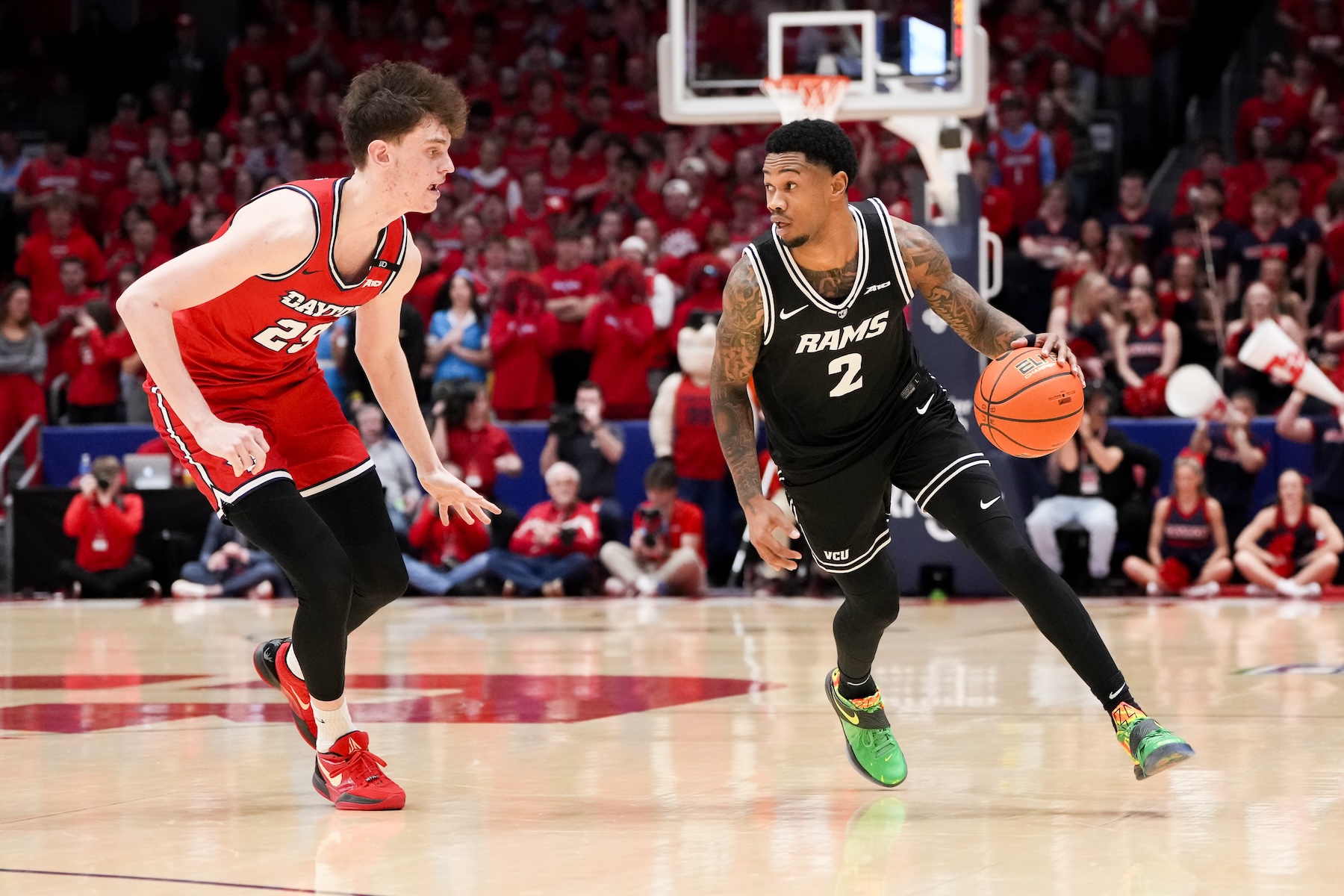
The size of the league makes the at-large math challening, because its overall metrics get dragged down by the teams at the bottom of the standings. Last season, the A-10 finished No. 7 in the NET. Five of the 15 teams were ranked in the top 100 and VCU was the only one in the top 40. Four were below 200. Dayton had the strongest non-conference schedule, but five of its six Quad 1 games came outside the league. That means the Flyers had precious little margin for error once conference play began. And beyond VCU and Dayton, the A-10 had a whopping two Quad 1 wins the entire season.
That trend helps explain why McGlade has been a vocal advocate for NCAA Tournament expansion. There are all kinds of explanations as to why the A-10 has been through such a drought, but there is no mystery as to what will end it. “We’ve been able to secure the non-conference games that we needed to secure, but at the end of the day, you have to win,” McGlade said. “You can’t just play a good game and lose by three points. Everybody says, well, great game, but that can only go so far.”
The scheduling for this season was done with the goal of rectifying this problem, but Dayton coach Anthony Grant, for one, remains realistic about the challenge. “Honestly, I don’t think it changes,” he said. “Walking into the season, you understand you’ve got to be able to be at your best in November and December and win some of those opportunities. Then you’ve got to be able to sustain it over an 18-game schedule (in the conference). So it’s a grind all the way through.”
Grant has a unique perspective on the pluses and minuses of being at a football school. He worked as an assistant at Florida for 10 years under Billy Donovan, and he was the head coach at Alabama from 2009-15. He also spent three years as the head coach at VCU when it was in the CAA. (VCU joined the Atlantic-10 in 2012.) “It depends on who you’re dealing with,” he said. “From the standpoint of being able to bring recruits to a football game and the whole fanfare around that is huge. Some kids would thrive in a bigger school, where some kids would be better suited in a smaller environment. It’s nice when you know you’re at a place where basketball is the main sport and you have the resources and the support to make recruits feel special.”
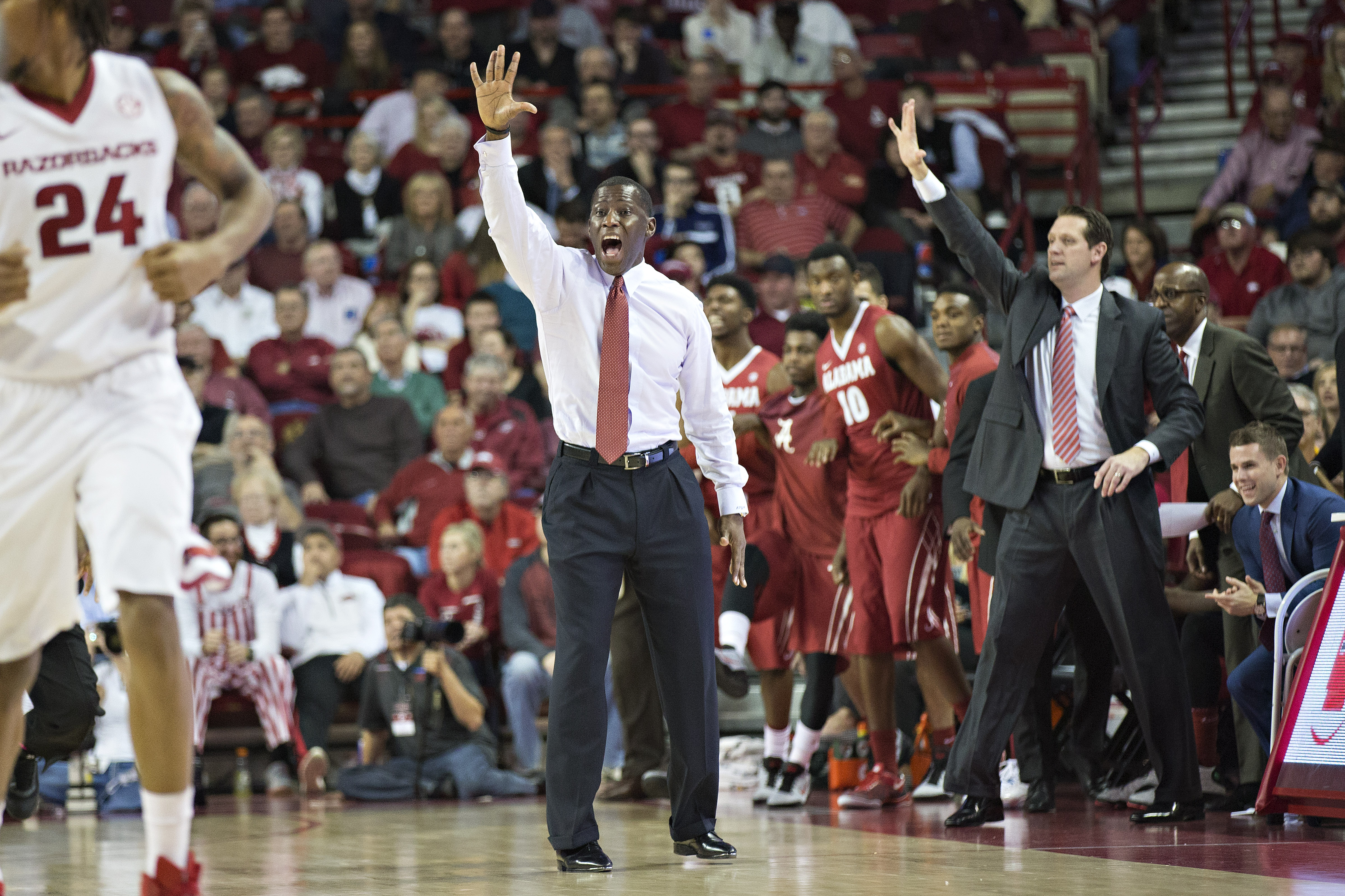
That Atlantic-10 dropped to 14 teams this season following UMass’ exodus for the MAC. McGlade said she is open to adding more teams, but she does not feel compelled to do it. “I’m not going to say we’ll never take additional teams, but we would only do it if it’s a basketball-centric institution,” she said. “They have to be want to be nationally revelant and put the finances and resources into NIL. They have to have the academic profile. There’s no reason to add a school just to add. There has to be value.”
There is much value in having a 50th anniversary come along at such a propitious time, but just because the Atlantic-10 is honoring its past doesn’t mean its stuck there. The marketplace remains challenging and NCAA Tournament bids will remain difficult to come by, but given the changing landscape and new math, the A-10 has some reason to believe that things are about to get better. “Our footprint is good now and our members are strong,” McGlade said. “We have great commitment right now in terms of NIL and rev share, and I’m anxious to see how we compete on the floor this year.”




